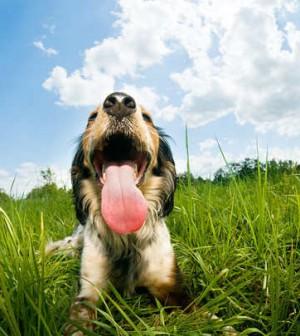
Because unlike humans, canine’s can’t sweat, dog liberally, dog panting is their way of cooling off and regulating their body temperature. Panting is normal for dogs, particularly after an exercise session, play or during warm weather. However when the panting turns into a point of hyperventilating, urgent medical care is required. Unusual and/or heavy dog panting can indicate severe fright or too much pain – two conditions that need to be look into the soonest possible time.
Signs of Health Issues
Normal dog panting occurs after exercise or playing. Or when the climate is too hot for canines. However, excessive panting can be a sign of severe pain or serious health issues. Dog excessively pants when they’re suffering from diarrhea, abdomen issues, backache and the likes. Excessive and abrupt dog panting coupled with sudden lethargy, and refusal of food and water may indicate more serious issues like heart failure, lung diseases and dog cancer.
Signs of Heat Stroke
Some dog breeds have short noses (ex. pugs, bulldogs) and because of this, they are more prone to having heat stroke than others. To prevent this, make sure that during summer or warm season, you exercise your dog under a cooler shade or spot, give him adequate clean and fresh drinking water and if possible, let him play in the pool daily.
Signs of Fear
If after checking you see that your dog doesn’t require medical attention but the unusual panting still exists, check for signs of fear. Canines are known to be frightened of thunderstorms, fireworks and any very loud sounds. Likewise, dogs can be terrified of abusive owners who constantly yell at them.
When it comes to dog panting, you need to make your own observation first. If your dog’s behavior includes panting every couple of minutes after running or exercising, then this can be a normal scenario for him. However, if your dog pants for a long time, hours or so, or pants unusually then a quick visit to the vet is recommended.

